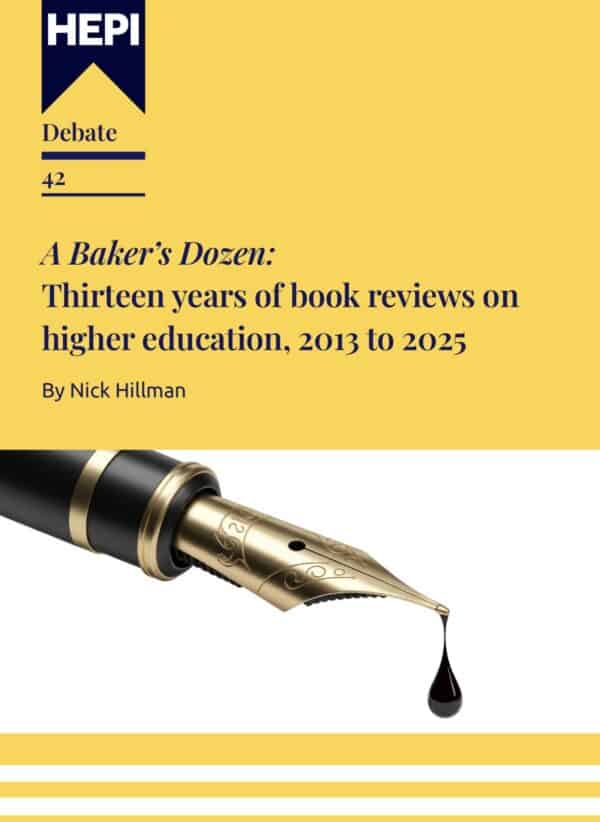Selecting and Supporting New Vice Chancellors: Reflections on Process & Practice – PART 2
This HEPI blog was kindly authored by Dr Tom Kennie, Director of Ranmore
Introduction
In the first blog post, I focused on the process of appointing new Vice Chancellors. with some thoughts and challenges to current practice. In this second contribution, I focus more on support and how to ensure that the leadership transition receives as much attention as candidate selection.
Increasingly, the process of leadership transitions often starts way before the incoming successful candidate has been appointed. Depending on the circumstances which led to the need for a new leader, the process may involve a short or extended period with an Interim Leader. This can be an internal senior leader or someone externally who is appointed for a short, fixed-term period. This in itself is a topic for another day. It does, however, require careful consideration as part of the successful transition of a new leader (assuming the interim is not appointed to the permanent role).
Reflections to consider when on-boarding Vice Chancellors
Rules of engagement with the Interim or Existing post-holder
Clear rules of engagement must be agreed with the appointed Interim. Among those rules are those relating to the engagement with the Board. Often these can feel quite implicit and unspoken. I’d encourage both parties to be much more explicit and document their mutual expectations to share with each other.
Incoming Vice Chancellor transition plan (individual and team-based)
Moving onto the post-appointment, pre-arrival period is an important phase in the process of ensuring a successful outcome. How can the incoming leader prepare (whilst often doing another big job)? How might the team prepare the way for the incoming leader? And, how might the existing or interim leader hold things together during this period? This is often a period of heightened anxiety within the senior leadership team (although rarely surfaced and discussed). Working with the team during this phase can help to reduce the danger of siloed working and help prepare the team for the arrival of the new leader.
Outgoing Vice Chancellor transition plan
Frequently overlooked is the importance of ensuring a successful transition for the current post-holder (assuming it has not been a forced exit). Beware of placing too much focus on the new person. Often, as indicated earlier, the current post holder may have many months to go before the new person can start. They also require support and encouragement. And, of course, recognition for their period in office.
Day 1 and week 1
The lead-up to day 1 requires significant consideration by the new Vice Chancellor. Meeting the new ‘inner office’ and considering how and in what ways the new Vice Chancellor is different in style and expectations compared to the outgoing leader is an important factor. Induction processes will, no doubt, feature heavily in the first few weeks, but a new Vice Chancellor should ensure that they control the transition process. This requires careful coordinated communication and choreography.
First x days (what’s the right number?)
Every new Vice Chancellor should be wary of being persuaded to work towards delivering a plan by some (often arbitrary) date, typically 90-100 days after their arrival. Understanding the context of the institution, and working with this, is more important.
Potential surprises & dilemmas
A new Vice Chancellor should expect a few surprises when they start. Context and culture are different and these will have an impact on the interpretation of events. To ensure success, these should be soaked up and immediate responses should be avoided. In time, it will be much easier to work out how to respond and what needs to change.
Match and ideally exceed expectations
Whilst clearly important and easy to say, it is vital to ensure the Vice Chancellor priorities are clarified with the Chair. Having done this, the senior team should be invited to similarly clarify their priorities. Lastly, these should be shared across the team. This, by itself, is likely to signal a new way of working.
A final proposal
The process of appointing Vice Chancellors is clearly an important matter for Chairs of Governing Boards. Whilst guidance is provided by the Committee of University Chairs (CUC), the latest edition of the document Recruiting a Vice Chancellor was published in 2017. Much has changed in the past eight years and it feels timely for a fresh look given the very different context and shifts in practice.
To close, it is worth remembering that nobody comes fully ready for any senior leadership role. Gaps exist and context and culture are different from the new perspective even if the candidate has had a prior role in a different place. You might wish to consider offering some independent support for your new Vice Chancellor. This could be through being a member of a peer-group and/or individual transition coaching. Being in charge is a lonely place and it can be constructive to be able to talk through dilemmas, issues and opportunities in a safe space. Sometimes this can’t be with one’s Chair or Senior Team.
Lastly, don’t be too judgemental and try and give any new Vice Chancellor the benefit of the doubt – well at least for a short while!







Comments
Add comment